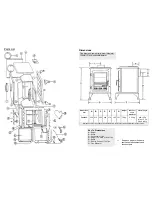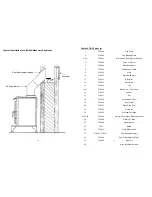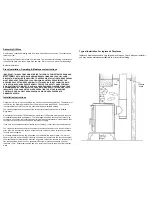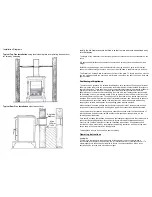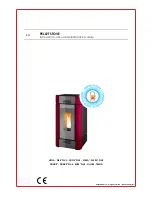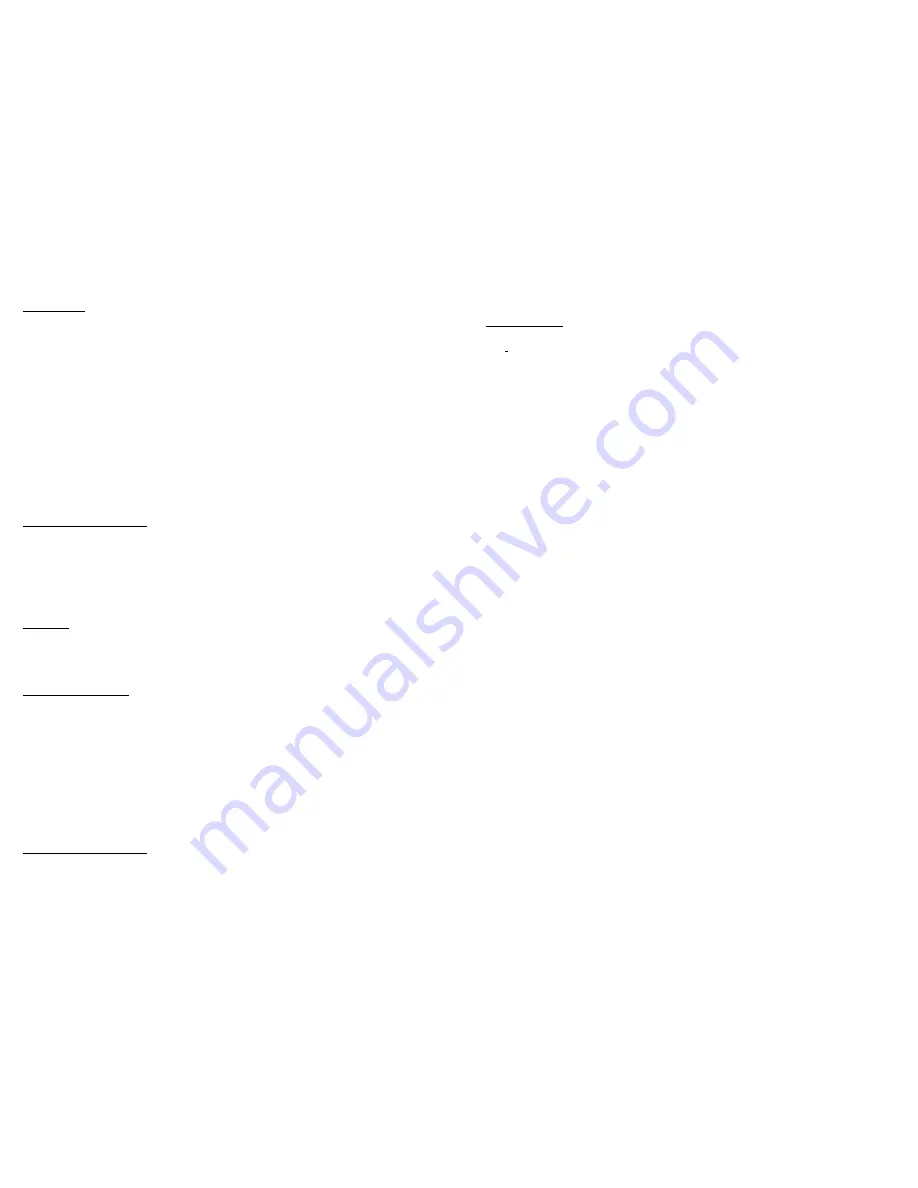
6
Secondary Air
Secondary air is controlled via the sliding vent above the door, it is this ‘airwash’ that
keeps a clean and uninterrupted view of the fire, also aiding in good secondary combustion of
fuel and reducing emissions into the chimney and environment. To adjust the secondary air
intake, simply move the slider left (-) for less air or right (+) for more air.
The stove has a pre-determined amount of fixed air supply on the primary and secondary air
sliders. This is factory set and should not be adjusted or altered as it
facilitates the clean burn function.
Because of the pre-set air supply it is important that the flue draught requirements are adhered
to, i.e. minimum = 12 pascals, maximum = 15 pascals. If the flue draught exceeds the
maximum requirements then over firing can occur and suitable measures to control draught
must be adopted.
Note: Over firing due to fixed air supply will not be dangerously high but efficiency may be
compromised.
Damper Assembly (optional)
When burning wood only, a flue damper assembly may be fitted. When the damper is set in
the open position the chimney draws at full draught, increasing the volume of air flow through
the stove and flue. Shutting the damper restricts the flow, slowing the rate of burning. This is
an after market product and will be of the type with positive open and closed indication to
prevent misunderstanding.
THE FLUE DAMPER SHOULD NOT BE FITTED WHEN BURNING SOLID FUELS
De-Ashing
It is important that the riddler is used to remove the ash to ensure an airflow through the
firebed and allow the fire to burn over the entire area of the grate. Insert peg on operating tool
into hole in riddling rod, draw tool forwards and backwards with a slow positive action. Set rod
in back position after de-ashing.
Notes On Wood Burning
Wood burns best on a bed of ash and it is therefore only necessary to remove surplus ash
from the grate occasionally.
Burn only dry, well seasoned wood, which should have been cut , split and stacked for at least
12 months, with free air movement around the sides of the stack to enable it to dry out.
Burning wet or unseasoned wood will create tar deposits in the stove and chimney and will not
produce a satisfactory heat output.
The clean burn function will be compromised if: the maximum fuel load is exceeded; the fuel is
not dry/seasoned correctly; the fuel is contaminated i.e. paint, tar resins; or if the flue draught
is insufficient.
Notes On Solid Fuel Burning
Always de-ash before refuelling and do not let the ash build up to the underside of the grate
bars. Solid fuel produces ash, which if allowed to build up will stifle the air flow through the
grate and eventually cause the fire to die.
11
5) Chimney Fire
Identified by loud roaring sounds, dense smoke and sparks exiting chimney.
Shut down air supply to stove by closing air vents, close stove door fully, call
fire brigade immediately. Regular chimney maintenance will prevent chimney
fires. Seek advice from a Qualified Chimney Sweep. Chimneys must be checked
annually more often when bituminous coal and poor quality smoky fuels are used.
If this appliance is well maintained and used correctly in accordance with these
instructions it will give many years of efficient service and prove to be an excellent
investment.


